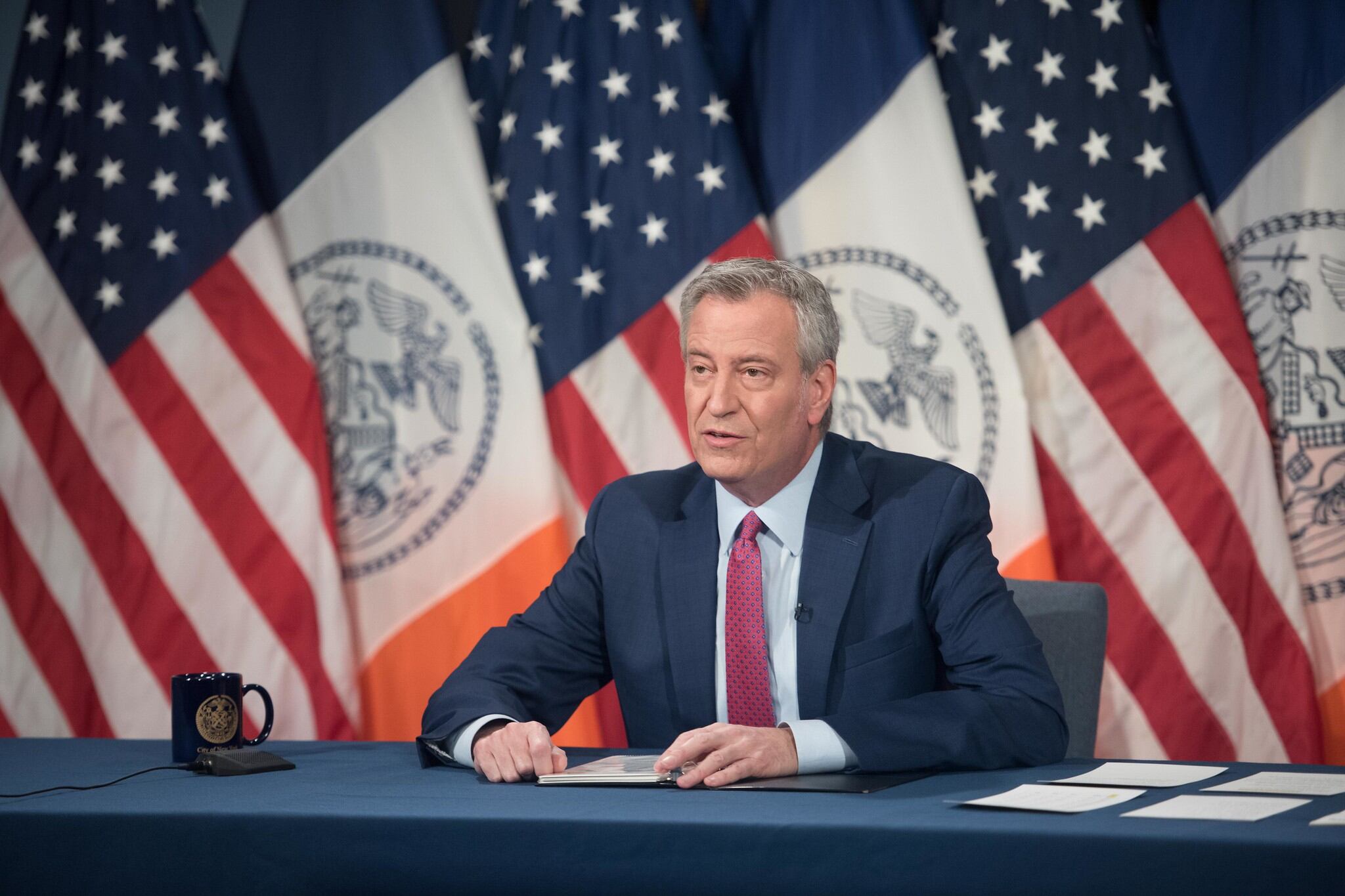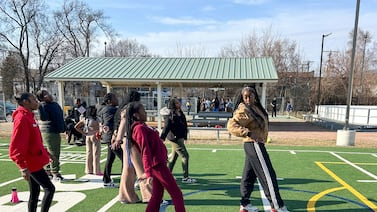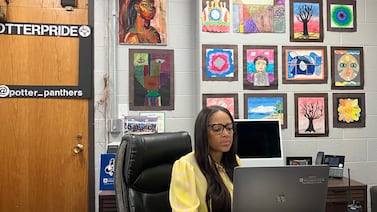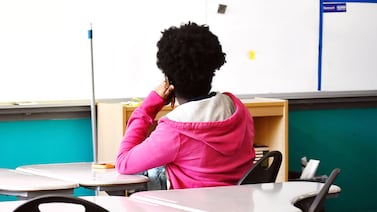New York City school buildings will shut down Thursday in an aggressive attempt to fight off another surge of the coronavirus, Mayor Bill de Blasio and schools Chancellor Richard Carranza announced.
The rate of people testing positive for the coronavirus over a seven-day average surpassed the conservative 3% bar the mayor set for triggering closures, according to health department figures.
Building closures for the city’s 1,600 public schools will take effect Thursday, forcing all of the city’s roughly 1 million public school students to learn in remote-only classes for an undefined period of time. The closure order does not apply to private schools and charters in their own buildings, city education department officials said. Certain pre-K programs operated by community organizations are also expected to remain open.
Both de Blasio and the chancellor stressed that the shutdown will be temporary, but it’s still unclear when students can return to classrooms.
Buildings will close until at least through November, de Blasio said. But the city and state are still hashing out the requirements for reopening and the mayor did not commit to a timeline.
De Blasio promised that any reopening plans will include an increased emphasis on COVID testing in schools, saying that students will not be allowed to return to class unless their parents have already consented to having their children swabbed for the virus.
“Testing is going to be crucial to the successful reopening of our schools and everyone has got to get engaged,” de Blasio said.
The shutdown is a major blow for the mayor, who staked much of his political capital, as well as the city’s time and money, on reopening the county’s largest school system. It also brings fresh scrutiny to the critical question of whether New York City has focused enough attention on improving online learning, after education department officials spent the summer enmeshed in the logistics of opening classrooms.
The mayor has consistently said that nothing compares to in-person learning and has done little to change that: The city has yet to put forward a detailed strategy to help schools improve online instruction.
The transition could be difficult for the 280,000 students who returned to school buildings for in-person instruction in socially distanced classrooms, especially for those who are more likely to struggle with virtual learning — including students who are homeless, those with disabilities, those learning English as a new language, and the city’s youngest children. Tens of thousands of children still lack access to devices or stable internet.
“It’s not OK what’s happening. My son has autism, and he has ADHD. The remote learning is mostly inaccessible,” said Heather Dailey, whose 8-year-old son attends a program for students with disabilities in Flushing, Queens.
Her son, Jordan, said there are “too much distractions” for him to learn from the studio apartment he and his mother share.
“I’m mad. The COVID cases are not going up by kids being up in schools,” Jordan said. “I like going to school so much.”
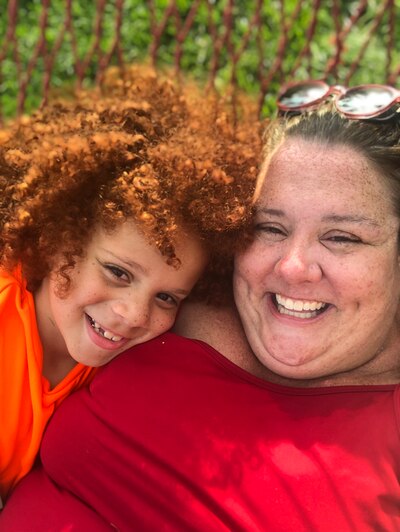
Public health officials have repeatedly assured parents that schools are safe, and testing for the virus in schools has revealed low positivity rates. Random coronavirus testing showed just 0.23% positivity out of more than 140,000 tests conducted among students and staff.
Community-run pre-K centers will remain open, the mayor has previously said. So, too, would the Learning Bridges program, which offers free child care.
Families with essential workers and students living in homeless shelters will be given priority at Learning Bridges sites, according to de Blasio. But he didn’t say whether children will be able to attend full-time. The program was set up only to serve children part-time, to fill child care gaps on the days students do not attend in-person classes.
Gov. Andrew Cuomo has cast some doubt on the mayor’s decision-making process, suggesting that the city’s trigger for closing schools was too strict, and that officials should “seriously consider” keeping them open.
On Wednesday, Cuomo said he would not block the closure of public school buildings in New York City, and suggested there will need to be special metrics crafted specifically for the city’s schools to determine how they should reopen.
The mayor and governor have clashed on school decisions throughout the pandemic, creating for parents and educators a confusing tangle of information. The state’s threshold for closing schools is 9% positivity rate over seven days, far less conservative than the city’s 3% threshold, though state officials previously approved the city’s 3% trigger.
Other parts of the world that have seen a resurgence of the virus have decided to keep schools open while shutting down offices and restaurants. It’s up to the governor to curtail those activities in New York City, and as of Wednesday, the state still allowed indoor dining and gyms to remain open. Additional restrictions, beyond closing down the school system, could be coming soon, de Blasio said.
De Blasio has invested a great deal in reopening school buildings, going to battle this summer with the teachers union while forging ahead with plans to bring back students as infections had sunk to some of the lowest levels in the country. As he made last-minute decisions, including two delayed starts to the year, he and the schools chancellor earned a no-confidence vote from principals.
Despite the missteps, the country’s largest school system has been held up as a bright spot on the long road to recovery — though the reality on the ground is complicated. More than half of the city’s students opted to learn remotely, and many students enrolled in in-person learning failed to show up for classes at all. Meanwhile, more than 30,000 students left public schools as of October, according to preliminary enrollment data obtained by Chalkbeat.
Other challenges include a staffing crisis as educators are needed to cover two different types of schooling: fully remote classes as well as hybrid classes, with children attending one to three days a week and learning remotely the rest of the time.
Many New York City principals expected another citywide shutdown and planned this summer for such a transition. Even when students are in school buildings, many are learning online with teachers delivering lessons remotely.
Yet there seems to have been little attention across the school system on how to improve remote learning. The city ultimately allowed schools to scale back on live instruction while contending with the staffing shortage, despite previous promises. Even before the shutdown, most children were learning online most of the time, with students attending in-person classes only part-time due to social-distancing requirements.
There are also major gaps in accessing devices and the internet to log on for remote learning. City officials are scrambling to equip homeless shelters with Wi-Fi, and to distribute tens of thousands of devices that schools and students have requested.
Some 60,000 children are still waiting to receive devices to access remote learning, the schools chancellor said, and many homeless shelters lack reliable Wi-Fi. Carranza said that schools have been putting together printed packets of work to send home with children who can’t get online.
April Rose, an elementary school teacher in Queens, knows the challenges first-hand.
“Students still don’t have devices. Students who have devices still have issues. Students who are supposed to be logging on, they’re not logging on,” she said. “Now we really have to hunker down and address those issues where they do exist.”
At Rose’s school, essential workers could send their children to school full-time, and some students with disabilities also attended school five-days a week.
“It’s our neediest kids who were there. Those are the kids I worry about the most,” she said.
She said she was grateful for the chance to teach students in person before shutting down, giving her a chance to build bonds that she’ll now have to tap into to motivate students to show up for remote learning.
She was also grateful for a heads-up to expect a shutdown.
The mayor warned last week that closures could be coming soon, and the teachers union told its members to bring supplies home in case teachers could not return to their classrooms. Now, Rose said she’s eagerly awaiting guidance for when buildings can open again — whenever that may be.
“Everyone brought home their potted plants, the pets, the fish. I brought home stuff that I need,” she said. “I told everybody today, ‘Happy Thanksgiving, merry Christmas, and happy New Year.’”
Alex Zimmerman contributed

